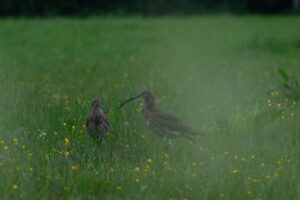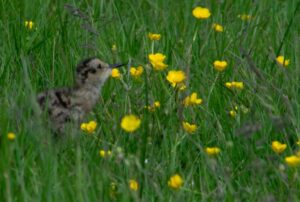
This is the same field chosen for Curlew Cam in 2022, but the male is not the same bird as the 2022 male.
Curlews were known to be site faithful historically. On farmland they are territory faithful and their large territories often span many different ownerships and managements . They forage, nest and rear chicks in different places. Curlews are birds that do not recognise boundaries and borders, they use landscapes.
Curlews are also considered partner faithful. The female does not have colour rings on her legs to identify her, so we do not know if she is the same female from 2022.
The male is a different bird to the 2022 male colour ringed ZZ by our ornithologist Tony Cross some time ago. The Curlew Cam male from the two previous years, colour-ringed FU is nesting with a new female in a nearby field.
Elsewhere in Curlew Country it is exciting to see new chicks reared as part of the Curlew Country headstarting initiative returning to breed.
The Curlew Country team had lots of fabulous viewings of migratory Whimbrels present in an adjacent field whilst finding the nest and putting up Curlew Cam. They seem to be ‘stopping over’ for longer than usual on their migratory route from South Africa to Iceland for much longer this year.

Size of Bird and Bill
We have taken a few stills to demonstrate the behaviour of both of the adult birds who take it in turns to incubate the eggs on the nest.
The first sequence of pictures shows the larger female and her longer bill (pictures 1 and 2) in comparison to the male (picture 3).



No Rest for the Birds
Whilst one bird is incubating the eggs during the day the other is acting as a guard somewhere near enough to keep in contact with the incubating bird. They can occasionally be heard alarm calling when they see a threat such as avian predators flying over. At night the guard bird, often the male, may fly up to several miles away in the landscape to rest in a safe place or near to good foraging habitat.
The bird on the nest cannot rest. It must also remain vigilant. It can often be seen foraging (picture 4) nest tidying(picture 5) and egg turning (picture 6). Rarely does it get a chance to truly rest although the occasional weary blink can be seen (picture 7).
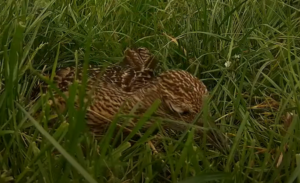
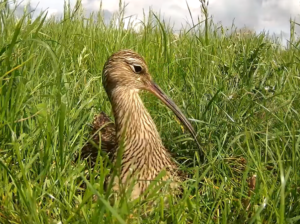


Curlew Cam Update - Rain Stops Play!
Many apologies to all for the interruption to viewing caused by the heavy rain which started in the evening of 21st May.
Problems have caused the camera to stop playing and we would need to go to the nest to re-start it. While the rain persists, and as this is a vulnerable time for the chicks just about to leave the nest, we will not do this on welfare grounds until the weather is more suitable. By that time, it is likely that the chicks will have left the nest, but we will bring you more news and views when we can.

When the viewing was interrupted it was at the nail-biting stage where the fourth egg remained unhatched but with visible hatching signs (pipping or cracking). The three older chicks were roaming in search of surface invertebrates to feed on and the incubating adult was keen to keep them close and safe. At intervals, the adult was obliged to leave the nest to ‘gather in’ its chicks. Whilst the incubation process continues the partner is still acting as a guard bird at a distance, making alarm calls if it perceives a threat and defending the nest against approaches from threats especially avian predators.
At some point the adult incubating adult will make the decision to leave the nest if the remaining egg has not made sufficient progress and the chicks are roaming too far away to keep safe. It will then be joined by the partner bird and between them they will guard and guide the chicks to search for food.
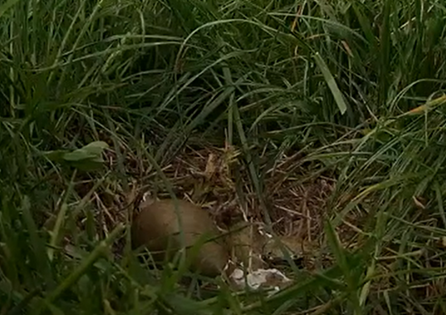
Three Go Roaming
All three chicks have left the fence area and are being guarded by both parents. As such, we will not reactivate Curlew cam on welfare grounds, but we will post photos and videos of the chicks when we can. We do not yet know what’s happened to the fourth egg but we suspect that it has not hatched.
Nest Update
Three chicks are thriving at the Curlew cam field. One is much more adventurous than the other two, who stay together at all times. We can confirm that the chicks have now left the nest and been led into the next field by their parents.

